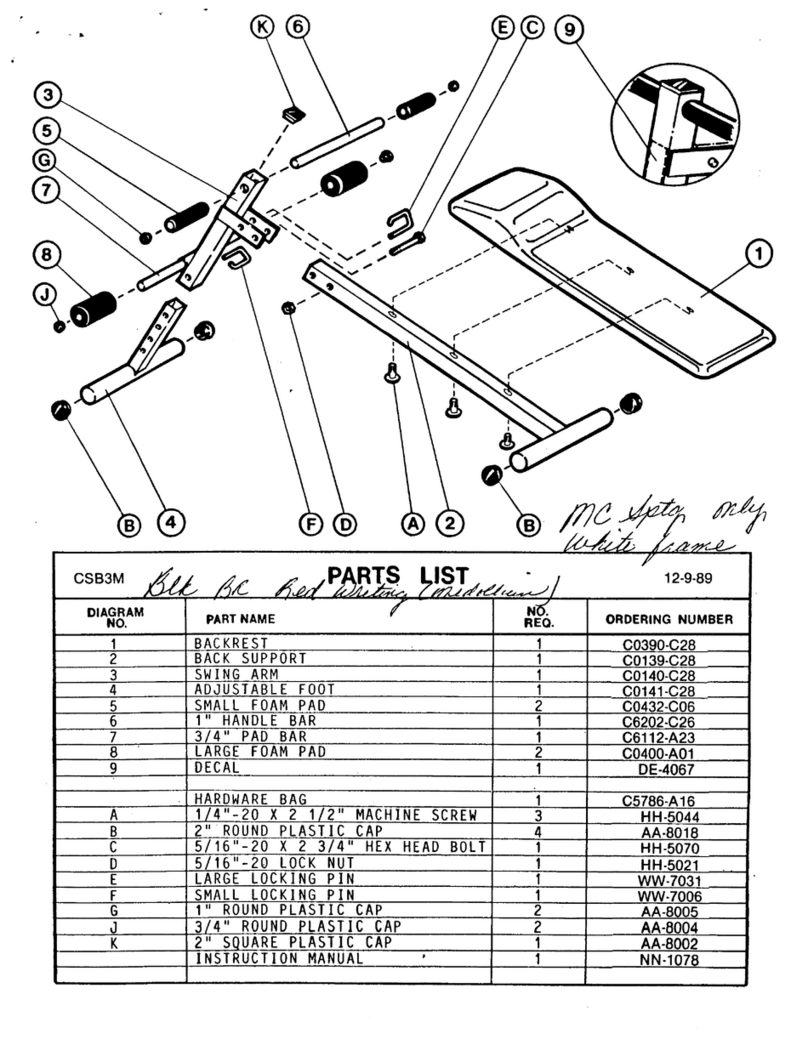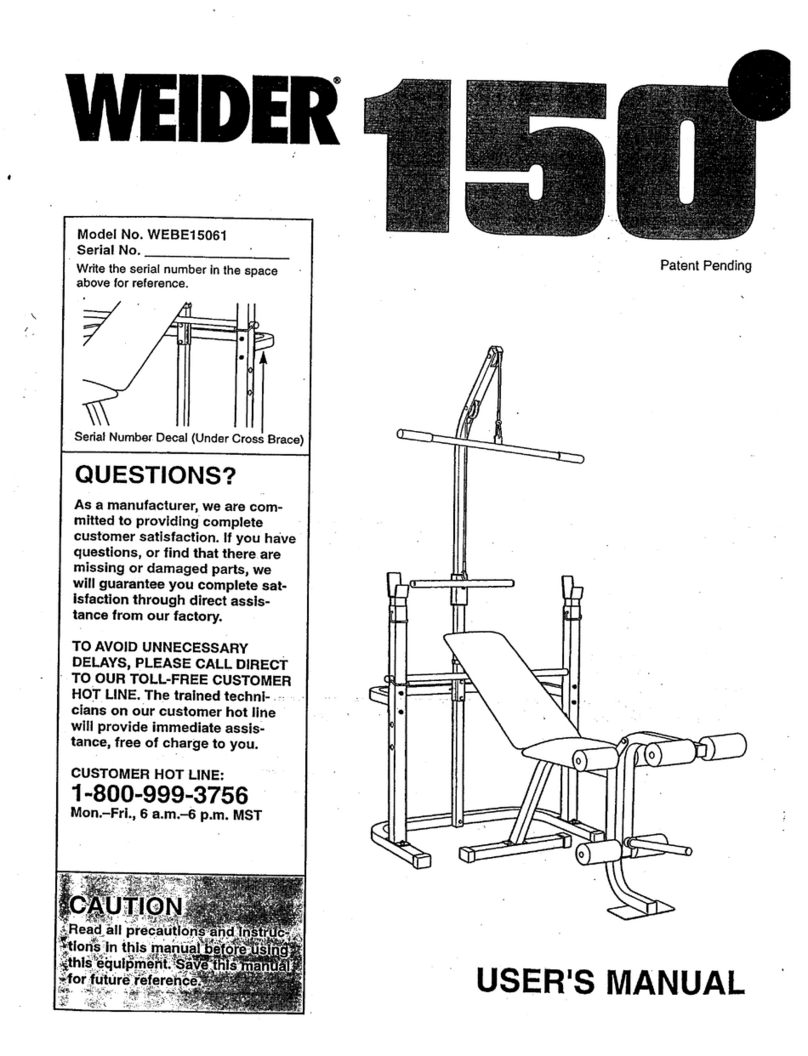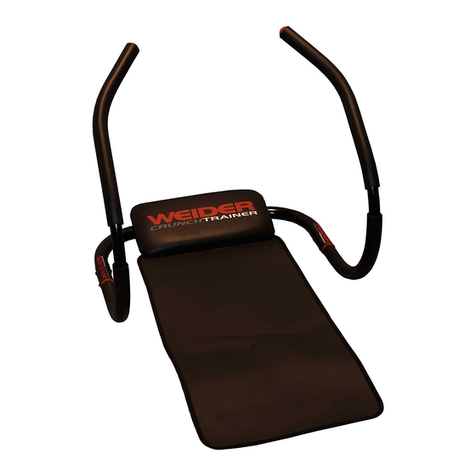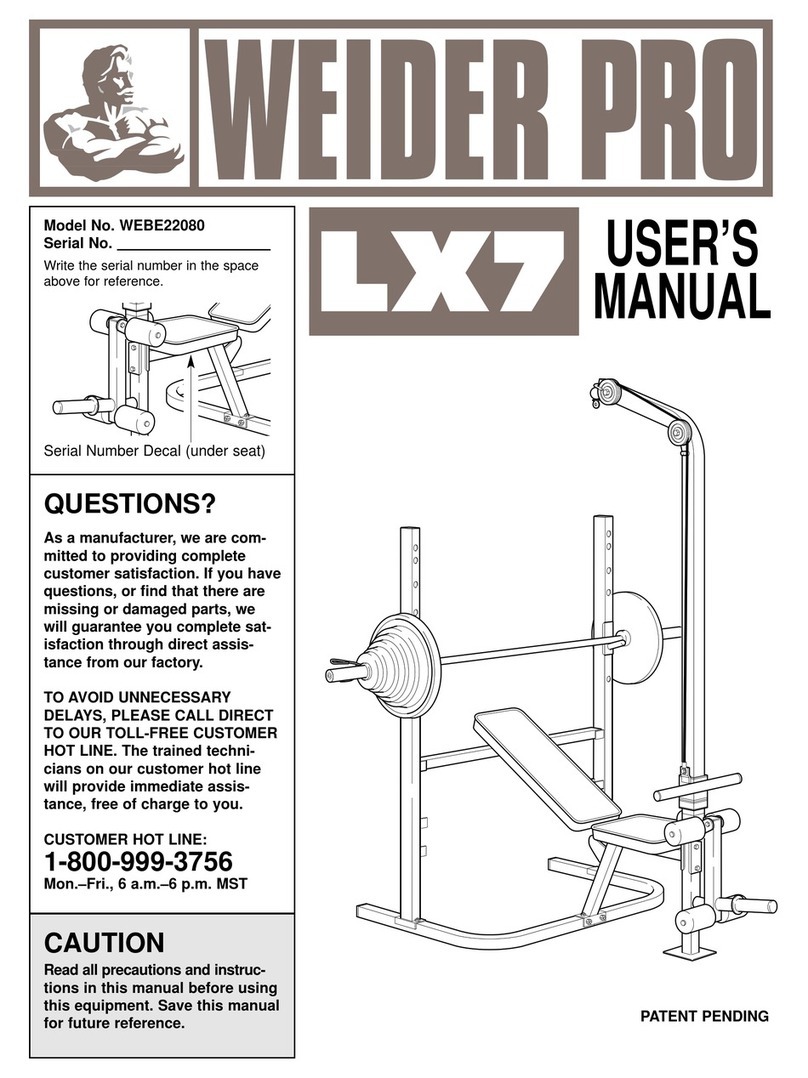Weider Cross Bow Advantage 831.153960 User manual
Other Weider Fitness Equipment manuals
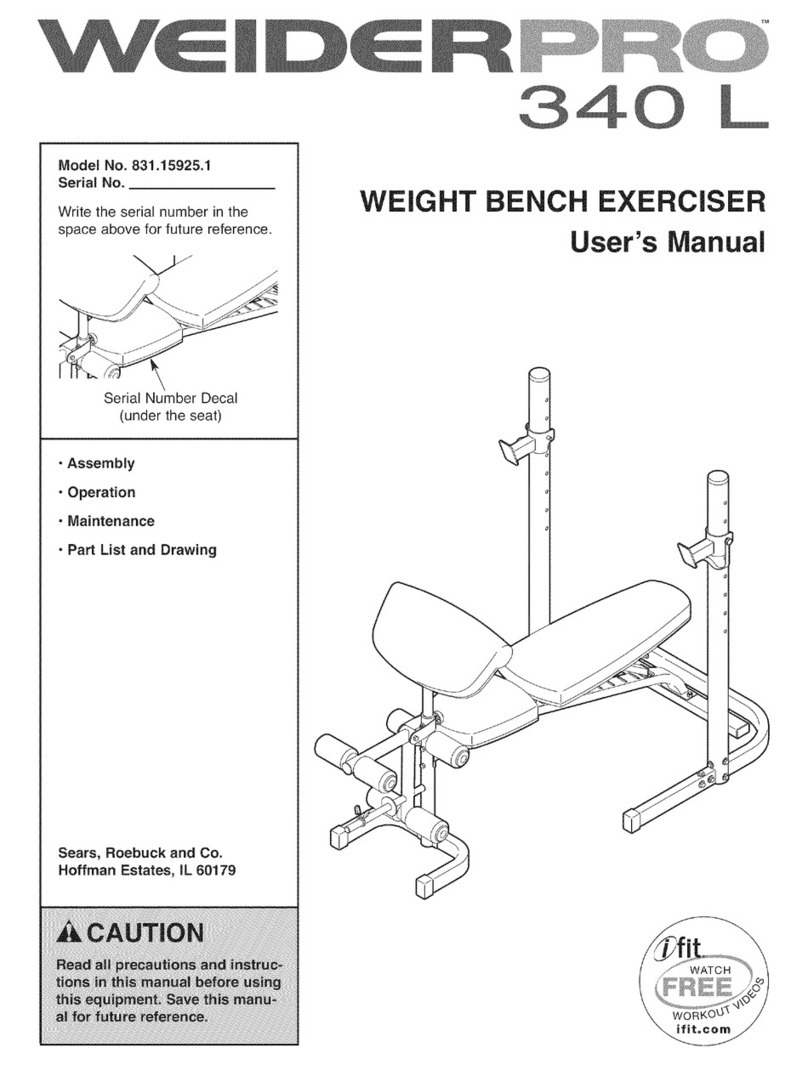
Weider
Weider Pro 340 L Bench User manual
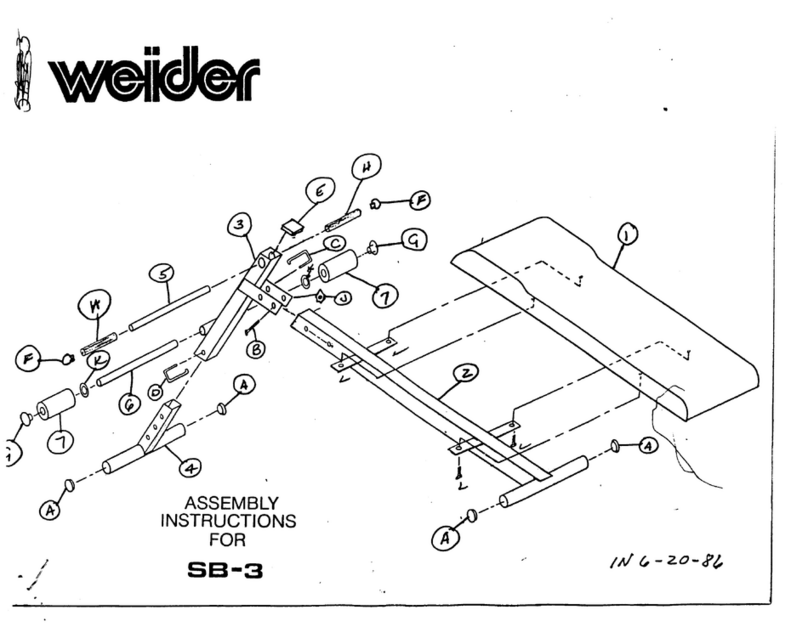
Weider
Weider Sb3 Slant Board User manual
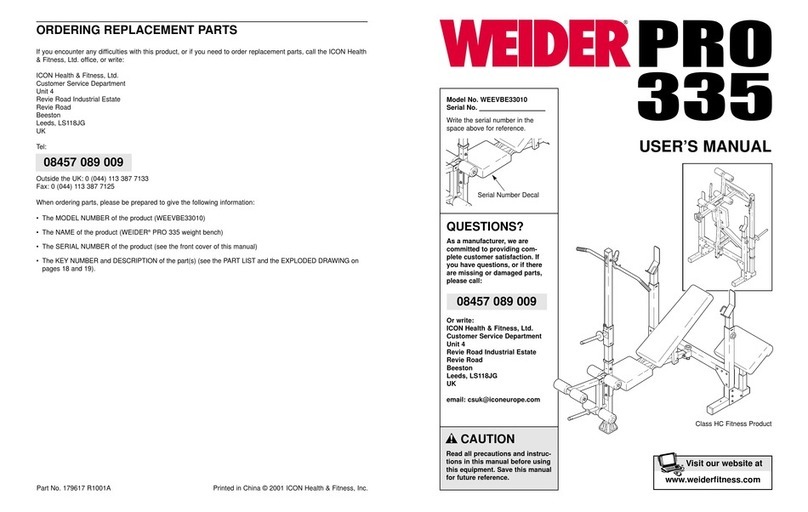
Weider
Weider WEEVBE33010 User manual
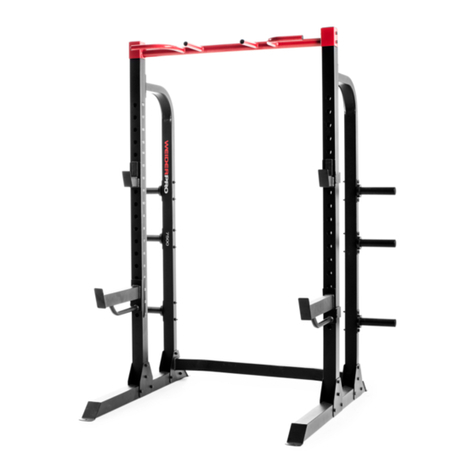
Weider
Weider Pro 7500 User manual
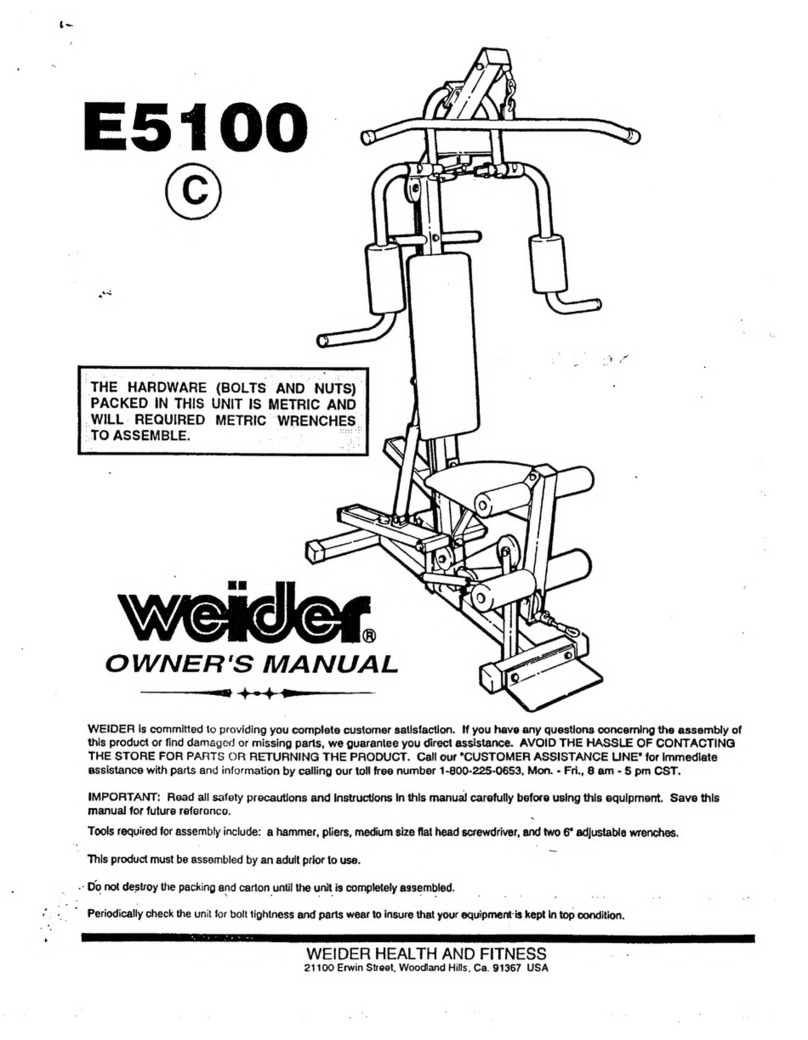
Weider
Weider E5100 User manual
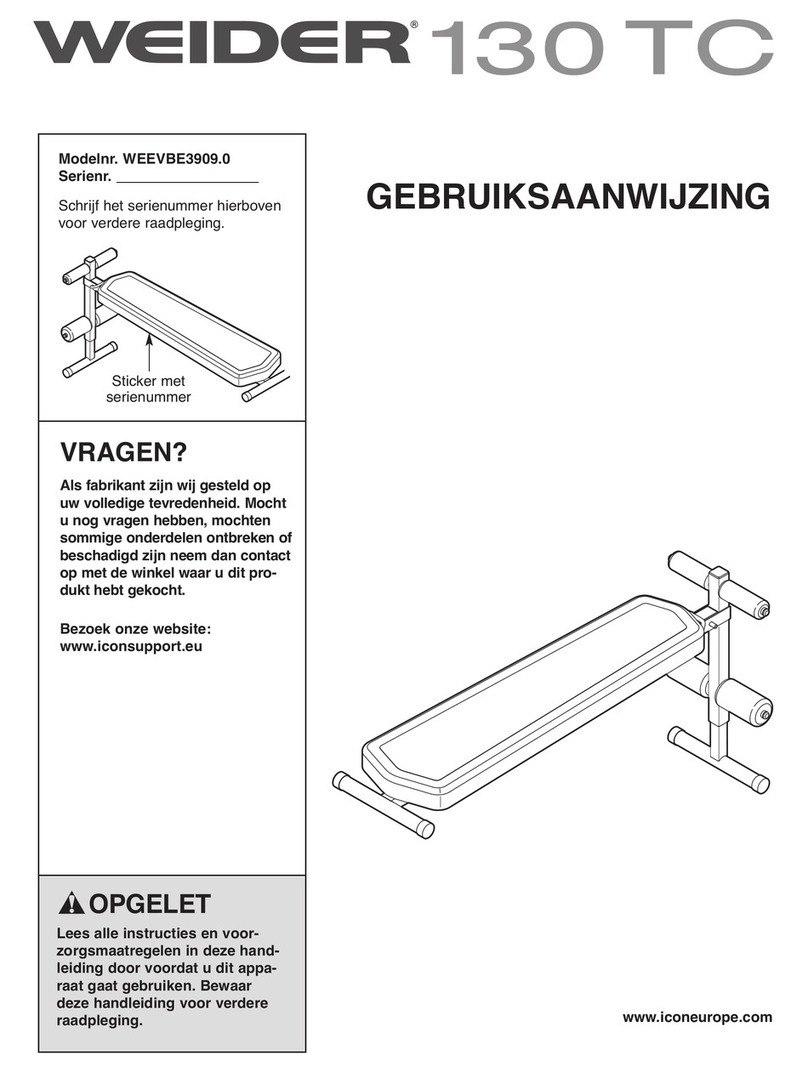
Weider
Weider 130 Tc Bench System manual
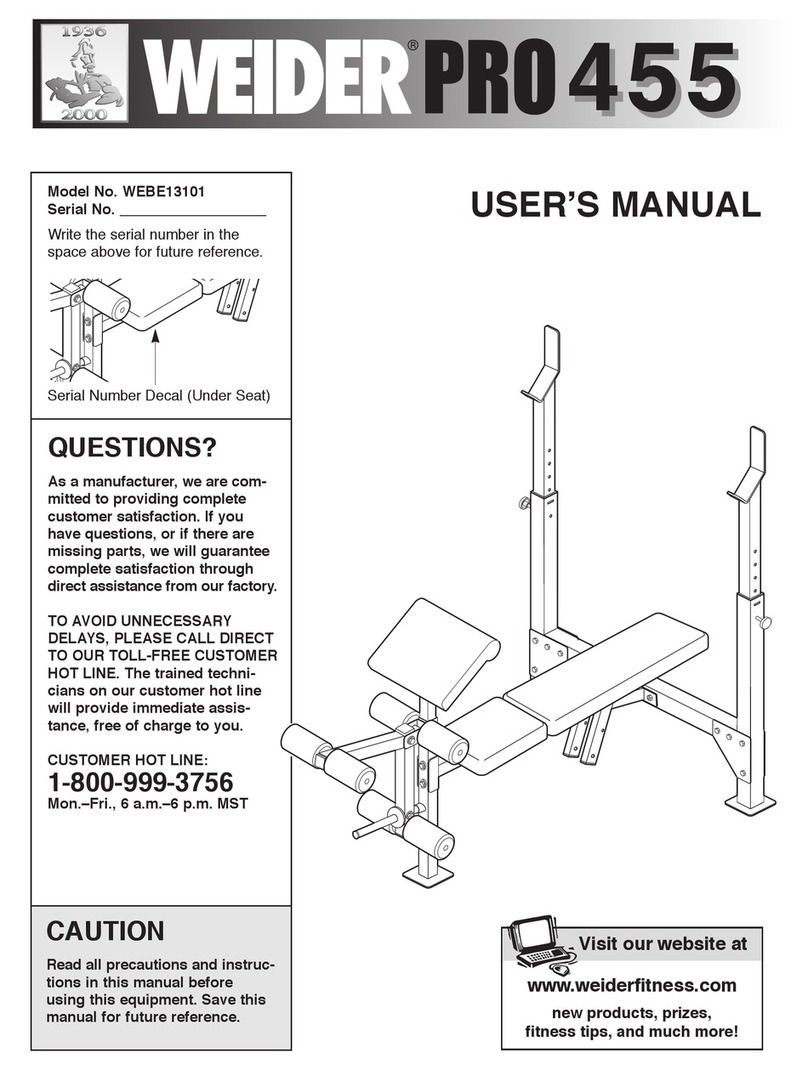
Weider
Weider WEBE13101 User manual
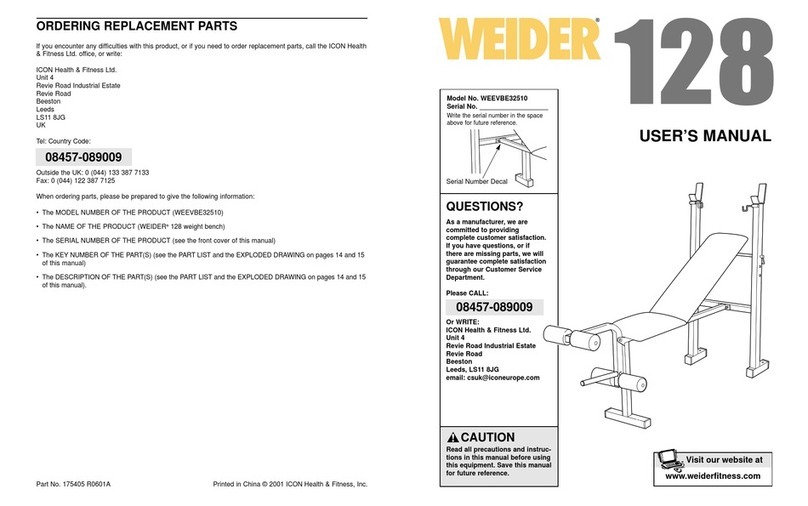
Weider
Weider 128 User manual
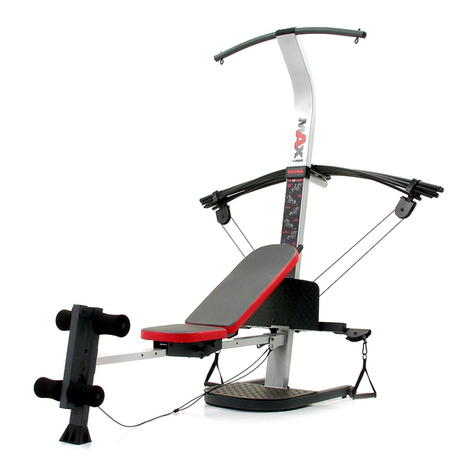
Weider
Weider CROSS BOW User manual
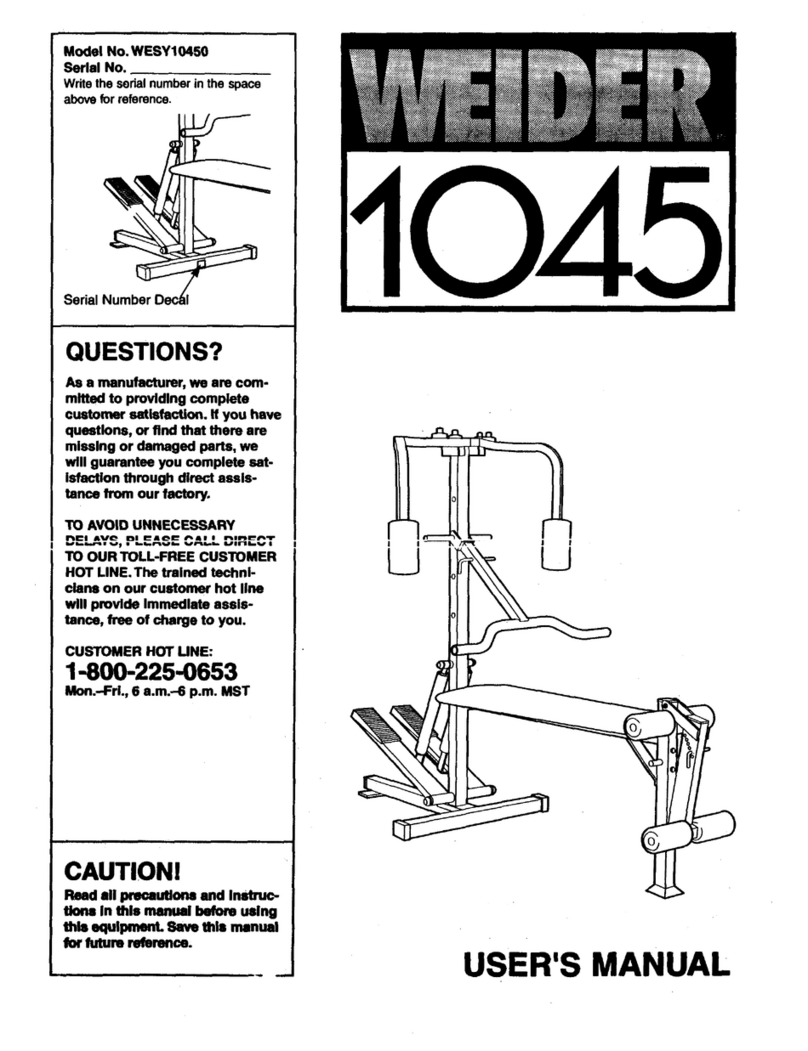
Weider
Weider 1045 User manual
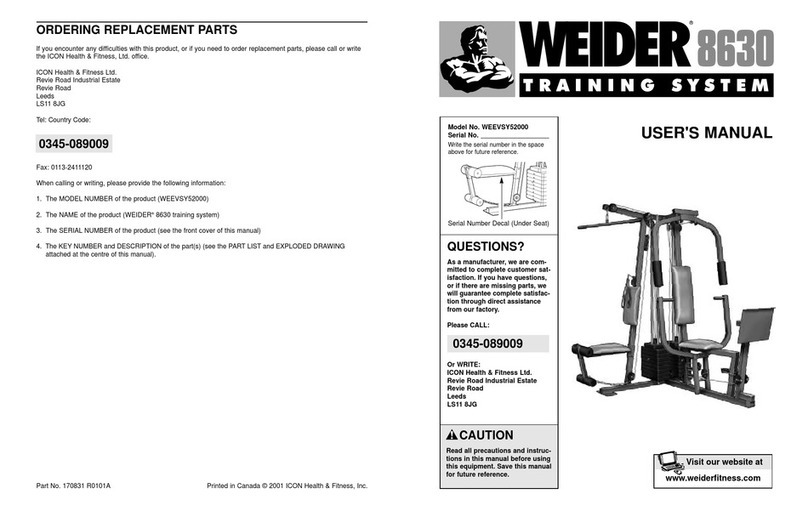
Weider
Weider WEEVSY52000 User manual
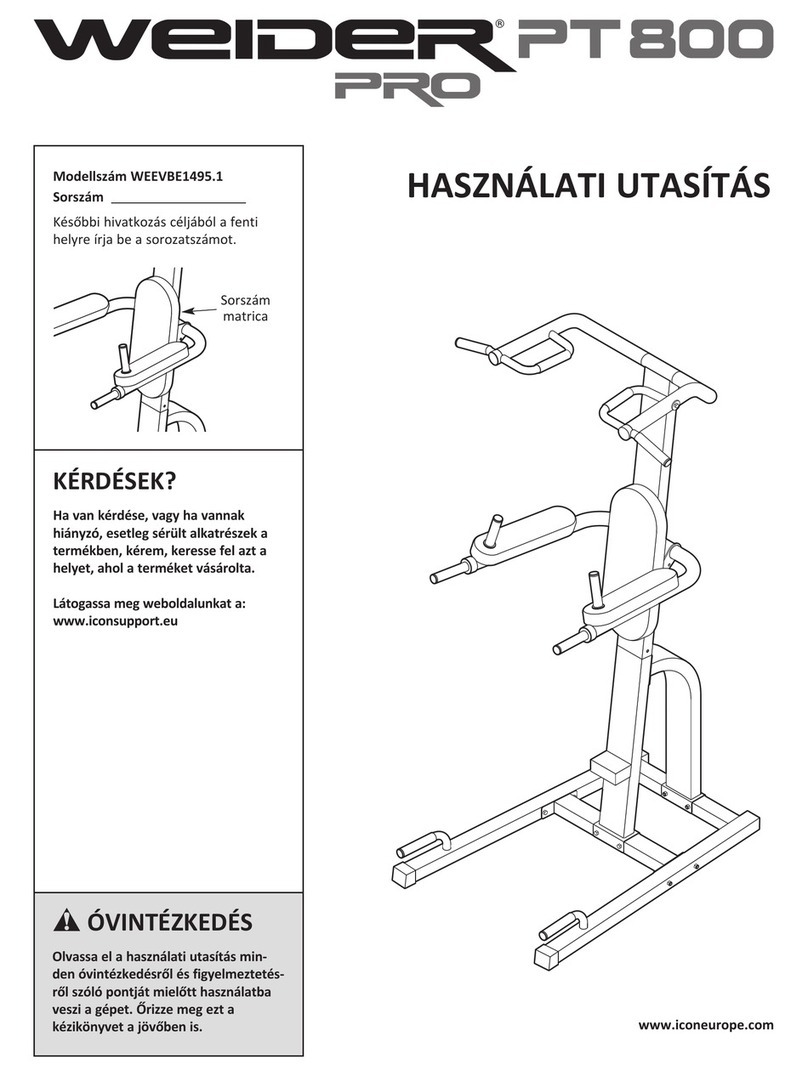
Weider
Weider Pro Pt 800 Bench User manual
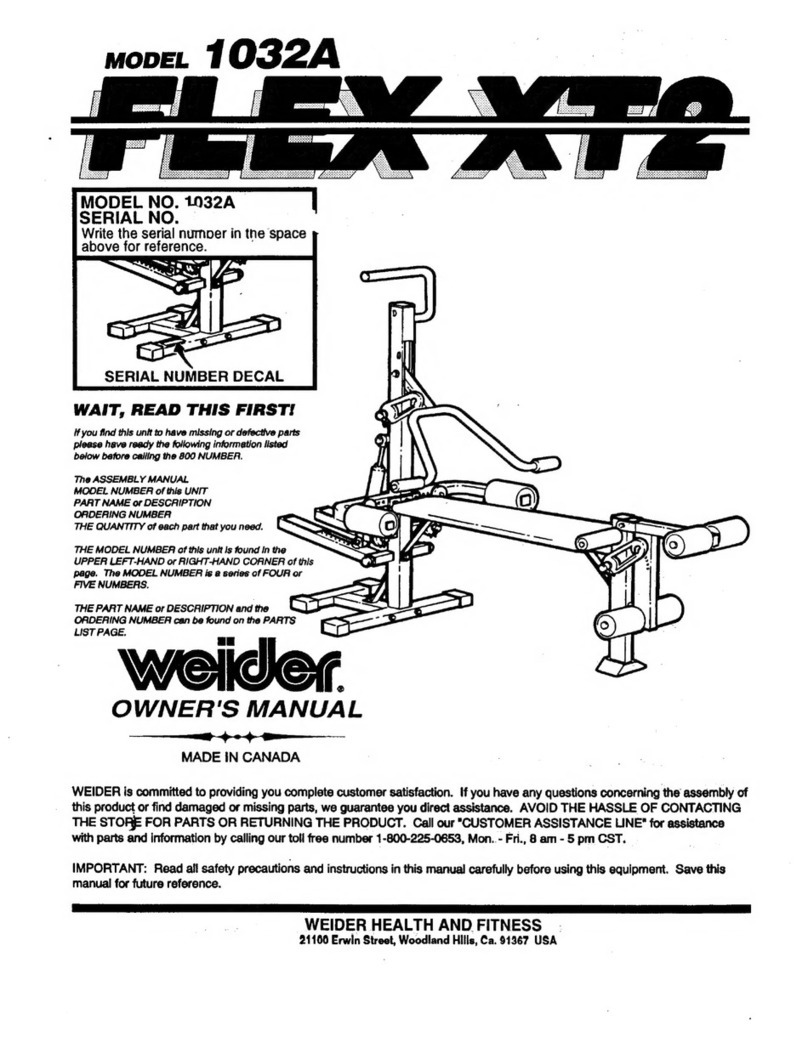
Weider
Weider FLEX XT2 User manual
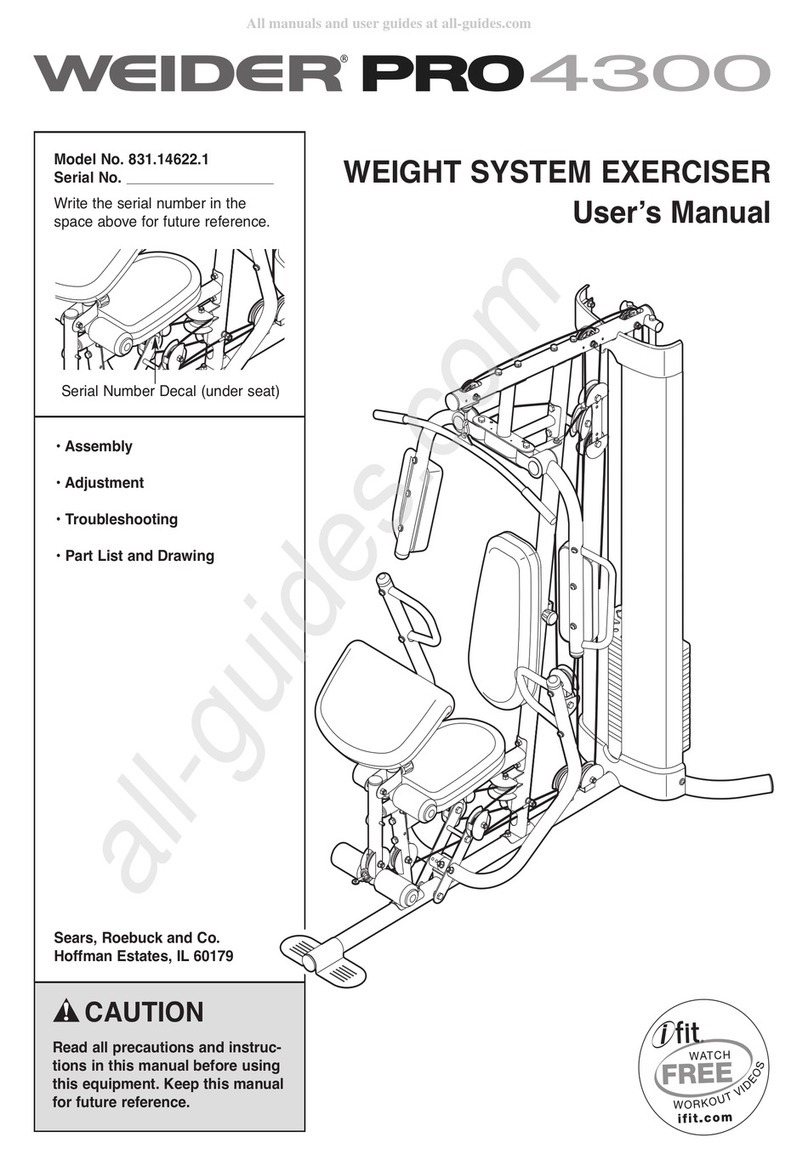
Weider
Weider PRO 4300 User manual

Weider
Weider WEBE15911.0 User manual

Weider
Weider Pro 7500 Quick start guide
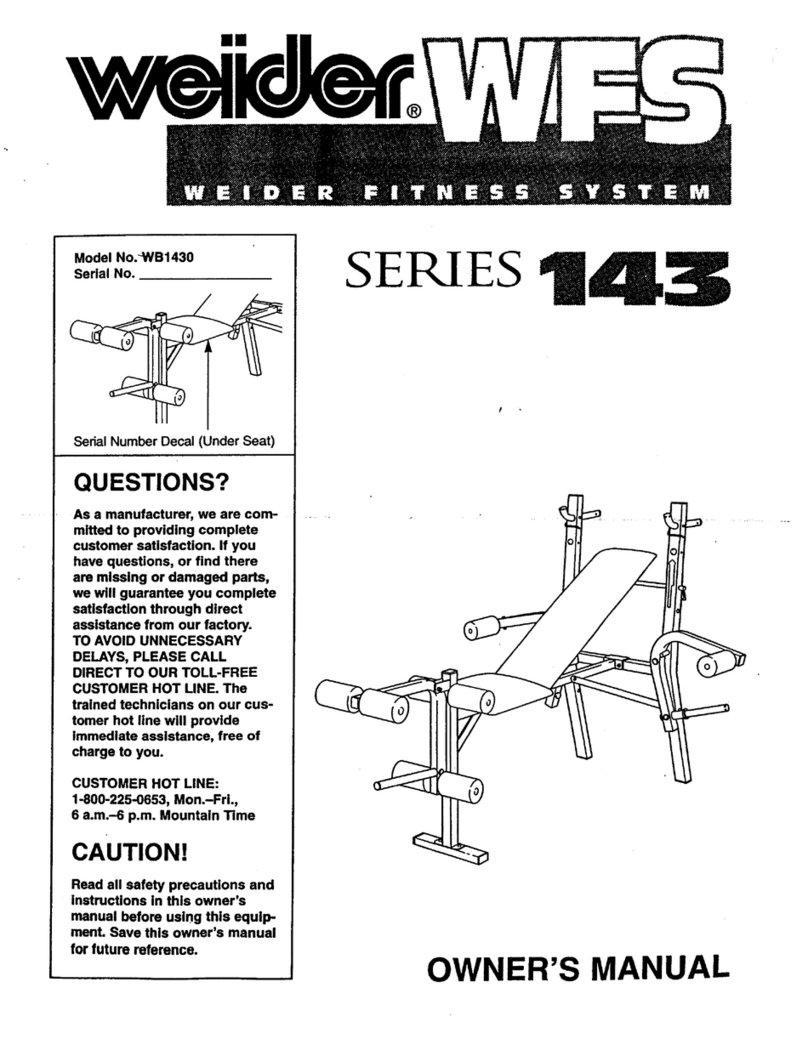
Weider
Weider Wfs Series 143 User manual
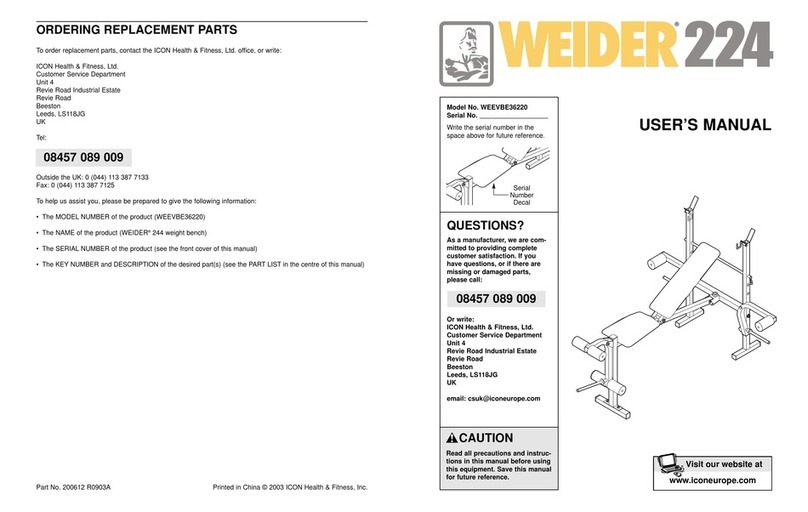
Weider
Weider WEEVBE36220 User manual
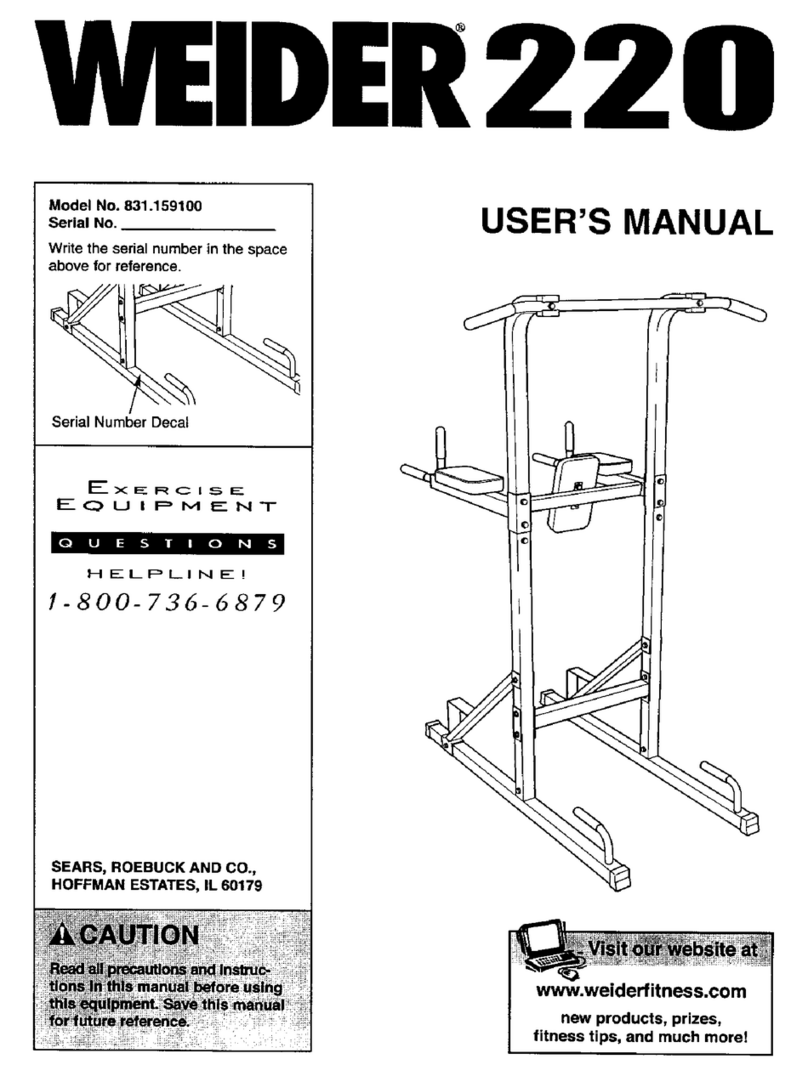
Weider
Weider 220 User manual

Weider
Weider Pro 9655 User manual
Popular Fitness Equipment manuals by other brands

G-FITNESS
G-FITNESS AIR ROWER user manual

CAPITAL SPORTS
CAPITAL SPORTS Dominate Edition 10028796 manual

Martin System
Martin System TT4FK user guide

CIRCLE FITNESS
CIRCLE FITNESS E7 owner's manual

G-FITNESS
G-FITNESS TZ-6017 user manual

Accelerated Care Plus
Accelerated Care Plus OMNISTIM FX2 CYCLE/WALK user manual
